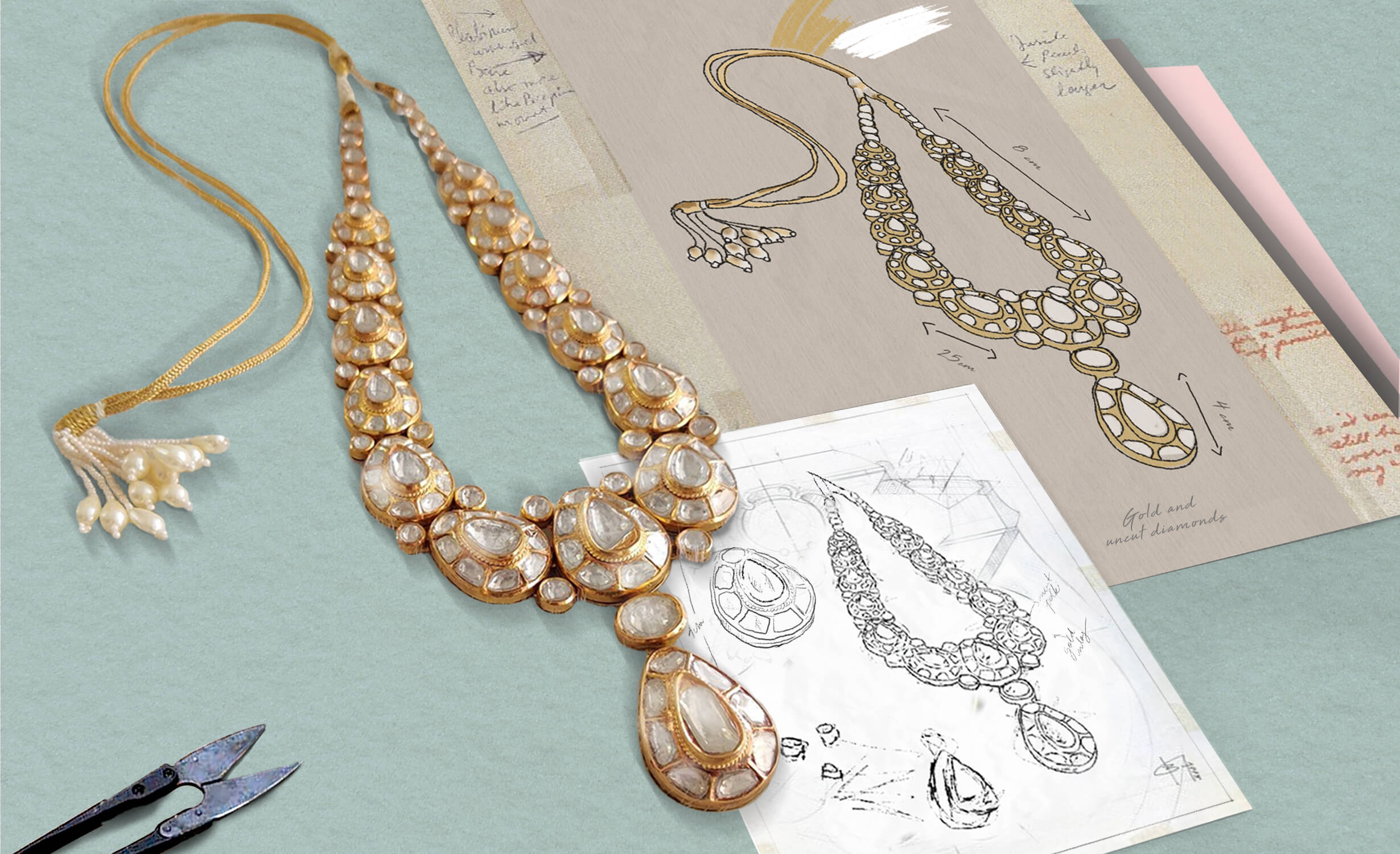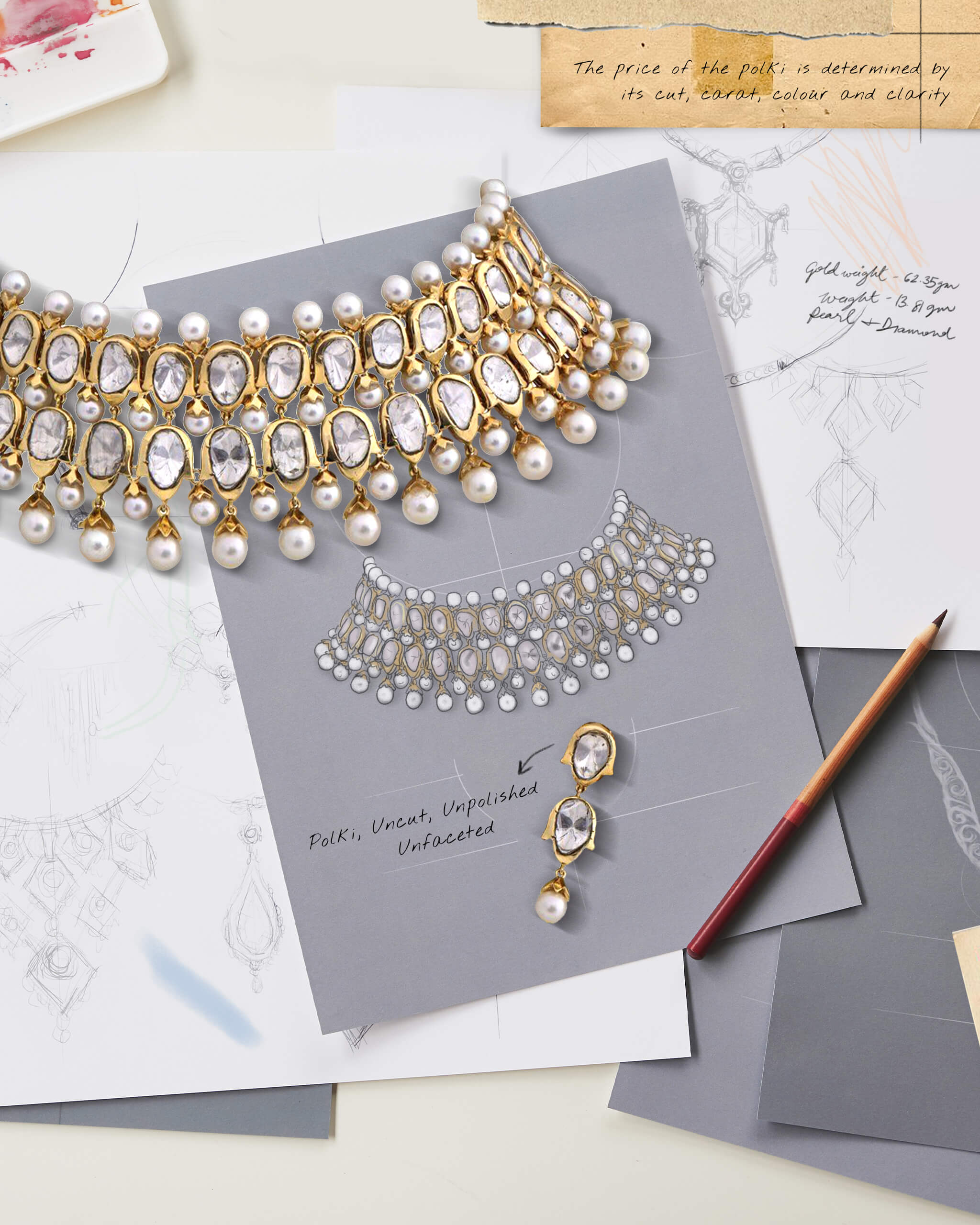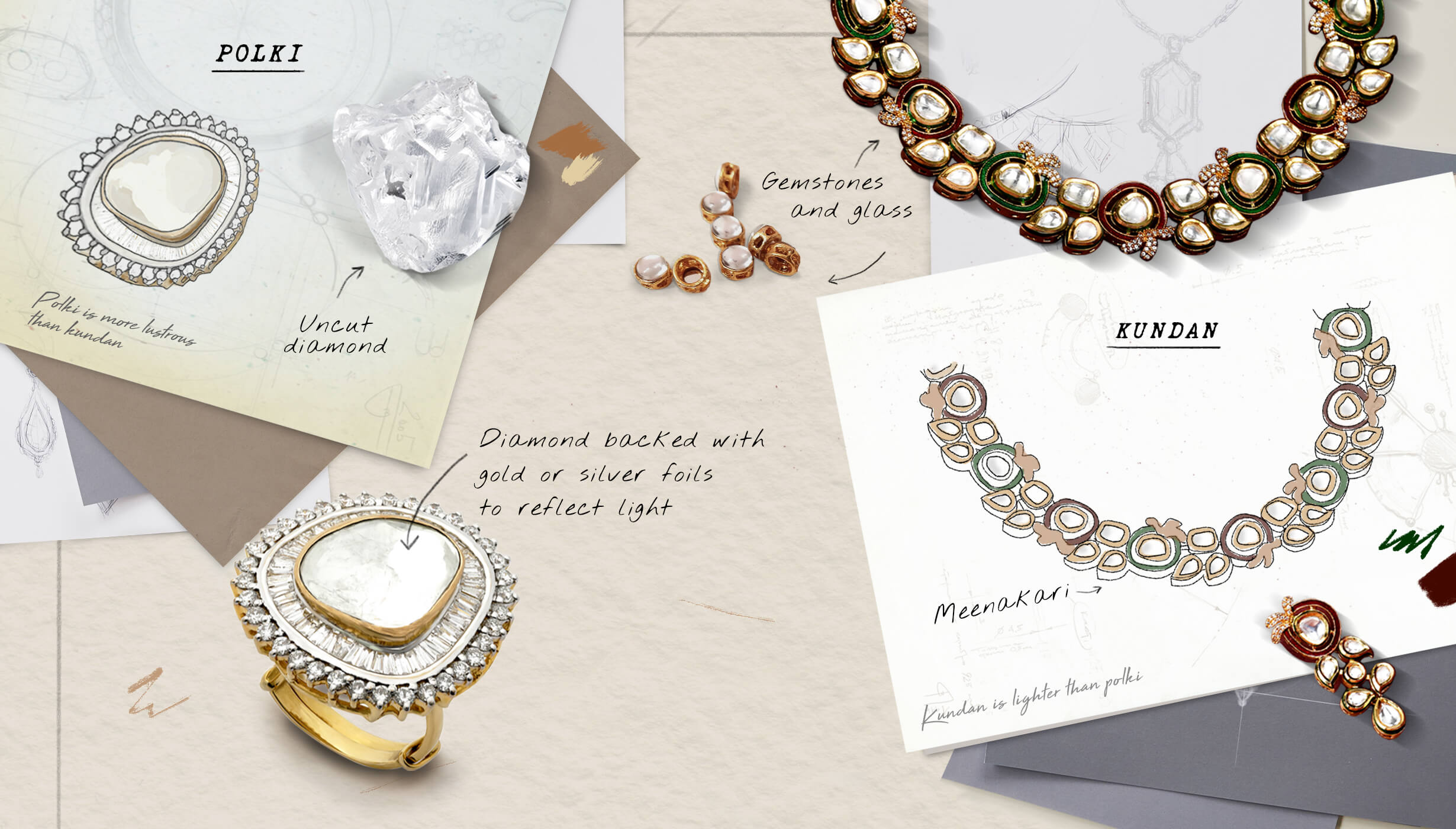Diamonds in the Rough: Decoding the Art of Uncut Diamonds
Why does this 2,500-year-old craft from India make a statement even today?
We delve into Polki’s past to decode its present-day appeal.

Take a peek into any Indian jewellery connoisseur’s carefully curated collection, and you will find more than a few uncut diamonds (locally referred to as Polki) in it. In fact, one of the first jewellery sets that my mother invested in for me was a Polki suite, just as her mother did for her.
This centuries-old craft has been proudly passed on for generations and enjoys unparalleled heirloom status till date.
According to Jaipur-based fine jeweller Sunita Shekhawat, Polkis are retained in their original rough version. “They have a non-faceted surface, and are generally cut to follow the original structure of the stone.” Simply put, Polki is an uncut and unpolished diamond used in its natural form. Dating back approximately 2,500 years, this fine craft was first brought to the Indian subcontinent by the Mughals, and traces of their old-styled cut Polki still influence contemporary designs, adds Shekhawat. Following the Mughals, uncut diamond jewellery went on to win the patronage of the Rajputs, and eventually, royal families across the country, who each adapted it to mirror their aesthetics. Today, Bikaner in Rajasthan is celebrated as the epicentre of hand-crafting uncut diamonds into time-honoured precious jewellery.
But how are uncut diamonds different from their other precious counterparts, and do they make for valuable investments? We find out.
Are uncut diamonds different from natural polished diamonds?
While Polki diamonds are uncut, unpolished and unfaceted, polished diamonds require the rough real diamond to undergo several stages of processing to take the form of one of its popular shapes like brilliant-cut, emerald-cut, cushion-cut or asscher-cut, among others. The key difference between the two is reflected in their very names.
While both are natural, uncut diamonds are unfaceted, whereas every facet of a cut diamond is enhanced by the jeweller to emit light, resulting in their high-shine brilliance.
This is why uncut diamonds don’t have the latter’s sparkle, yet have a raw charm of their own.
Take, for instance, the monumental 3,106-carat Cullinan that was unearthed in 1905 or the celebrated 1,109-carat Lesedi la Rona discovered in 2015. In their original uncut forms, these diamonds held a beauty that captivated the world. The stones were later acquired and cut — the Cullinan into nine brilliantly shaped stones, and Lesedi la Rona into a 302.37-carat emerald-cut stone — their beauty transformed, but never lost.

Jewellery: Jaipur Gems
Understanding the difference between Polki, Kundan and Jadau
A term synonymous but incorrectly used with Polki is Kundan. According to Yash Agarwal, partner and creative director at Birdhichand Ghanshyamdas Jaipur, this comparison is irrelevant. “Polki and Kundan are very different from each other. Polki is an uncut diamond — it is a style of cleaving diamonds backed with either silver or gold foils to reflect light.” Kundan, on the other hand, has two different connotations — one is as a replacement for Polki (in such a context, it is also referred to as billor or synthetic Polki). Shekhawat shares that this form of Kundan uses machine-made, perfectly-cut and polished pieces of glass. “Kundan stones reflect light back like a mirror and therefore do not possess that rawness and precious quality associated with uncut diamonds.” The other connotation is more common in jewellery manufacturing and trade circles where “Kundan refers to the 24 karat foiling used on the base to hold the stones together,” explains Agarwal.
And if you’re wondering where Jadau fits into this scheme, Jadau is the traditional name for setting gold around the Polki, glass or any other colourless stone. The art of Kundan (24 karat gold) setting around Polki is also known as Jadau jewellery. So Polki is a stone, Jadau is the technique used to set it, and Kundan can be a stone or a technique depending on who’s using the term!

Polki jewellery that is backed with gold or silver foil to lend the stones a brilliant shine when they reflect light. Meenakari, an artful style of Kundan jewellery, fuses brilliant colours over the surface of the ornament.
Is Polki a worthy investment?
Not only does Polki enjoy the revered mantle of wearable art, it is touted as a sound investment too. “The price of the Polki is determined by factors like its carat and clarity. It definitely has a huge potential for resale as well as strong buyback value,” informs Agarwal. While re-cutting and re-shaping the diamond can be cumbersome (and depends on the quality of the stone), it is still possible to repurpose your existing Polki pieces to give them a fresh lease. And while Polki has always enjoyed the unanimous favour of the Indian aesthete, Agarwal believes there is a rise in its market acceptance internationally as well.
Jewellery: Jaipur gems, Sona Chandi Jewellers, Sunita Shekhawat Jaipur, Raniwala 1881, Umrao Jewels and Birdhichand Ghanshyamdas Jewellers
Polki diamond Jewellery in the 21st century
Traditional Polki designs — elaborate chokers, multi-layered necklaces and classic earrings — continue to enjoy uninterrupted popularity in India. A quintessential Indian bride is often Polki-clad for her walk down the aisle. But present-day renditions of Polki go well beyond just royal connotations. Even bridal pieces are being revisited with clever, practical tweaks such as detachable and multi-purpose elements. Designers are also approaching Polki through a modern lens to extend its wearability beyond just the festive season. Cue: elevated designs mixed with multi-coloured enamelling, polished natural diamonds and precious gemstones to infuse contemporary charm to these classic pieces.
It is said that a thing of beauty is a joy forever. Fittingly, such is the case with uncut diamonds too. The stone has not just aged well but has thrived through the centuries to retain its precious spot on every jewellery lover’s must-have list. And with good reason at that.
